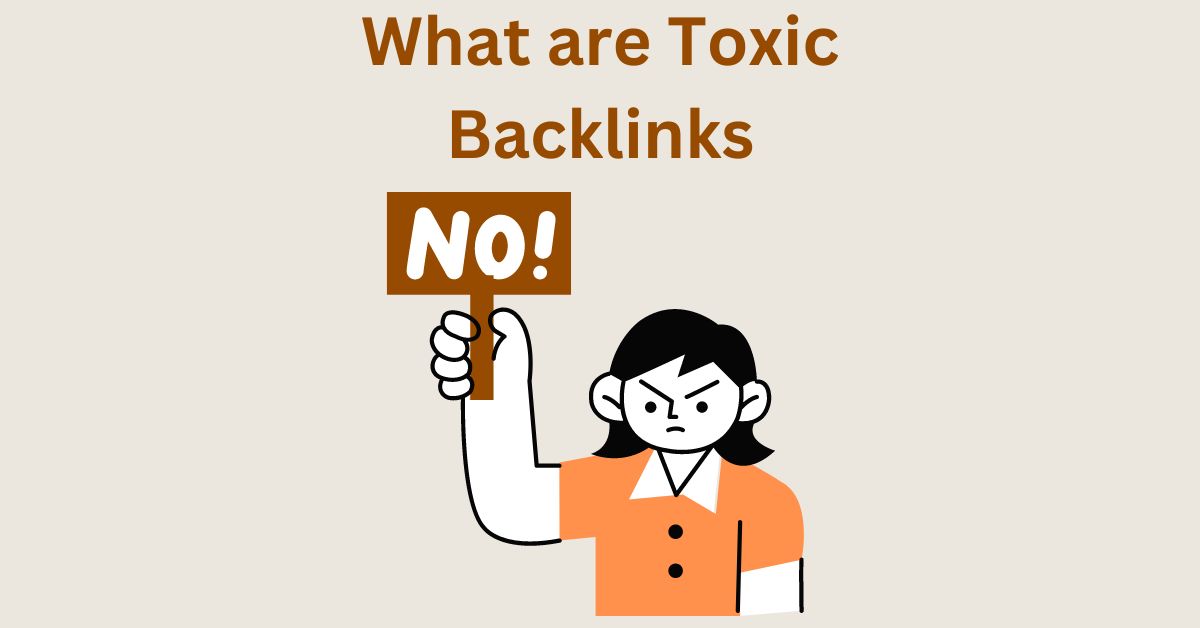Toxic Backlinks – How to Identify Bad Links, Find, Get Rid of and Fix Them?
Estimated reading time: 5 minutes
Last updated on March 26th, 2024 at 07:22 am
Do you want to know “What are Toxic Backlinks and How to Remove Them”?
Imagine you’re trying to make friends, but some of them are really bad influences. That’s a bit like toxic backlinks.
They’re links from other websites that are harmful to your site’s reputation, kind of like having bad friends dragging you down.
Toxic backlinks can seriously hurt your website’s ranking on search engines like Google.
They make search engines think your site isn’t trustworthy or relevant, which can lower your site’s visibility and traffic.
Did you know that over 65% of webmasters have dealt with toxic backlinks?
It’s crucial to identify and remove them to keep your website healthy and performing well.
Understanding Toxic Backlinks
Imagine your website is like a house, and backlinks are like doors leading to your house.
Now, think of toxic backlinks as harmful or dangerous doors that can bring trouble to your house.
Toxic backlinks are links from other websites that can harm your website’s reputation and rankings on search engines like Google.
Did you know that toxic backlinks can negatively affect your website’s SEO efforts?
They can lower your website’s authority and trustworthiness, making it harder for people to find you online.
According to research, 50% of website owners believe that toxic backlinks have a significant impact on their search engine rankings.
Identifying Toxic Backlinks
Imagine you’re a detective searching for clues to solve a mystery.
Identifying toxic backlinks is a bit like being a detective for your website.
You need to look closely at the links pointing to your site and determine if they’re helpful or harmful.
Signs of toxic backlinks include links from spammy or irrelevant websites, links with suspicious anchor text, and links from websites with low authority.
Did you know that Google’s algorithm updates can penalize websites with toxic backlinks?
It’s crucial to regularly audit your backlink profile to identify and remove any toxic links.
Studies show that 41% of websites have experienced a drop in rankings due to toxic backlinks.
Risks Associated with Toxic Backlinks
Picture your website as a garden, and toxic backlinks as weeds trying to invade it.
Just like weeds can harm your garden, toxic backlinks can harm your website.
They can lead to penalties from search engines like Google, causing your site to drop in search rankings or even be removed from search results altogether.
Toxic backlinks can also damage your website’s reputation, leading to a loss of trust from visitors.
Did you know that 94% of traffic from Google comes from the first page of search results?
That’s why it’s crucial to keep your website free from toxic backlinks to stay visible and trustworthy online.
Strategies to Remove Toxic Backlinks
Think of removing toxic backlinks as cleaning up your garden to keep it healthy.
There are several strategies you can use to remove toxic backlinks from your website.
One approach is to manually reach out to the website owners and request the removal of the harmful links.
Another strategy is to use disavow tools provided by search engines like Google to tell them not to consider certain backlinks when assessing your site’s ranking.
Also, regularly monitoring your backlink profile and conducting audits from SEMrush can help you identify and remove toxic backlinks before they cause damage.
Did you know that 66% of website owners have taken action to remove toxic backlinks from their sites?
It’s essential to be proactive in protecting your website from the risks associated with toxic backlinks.
Tools for Identifying and Removing Toxic Backlinks
Imagine you have a toolbox filled with gadgets to fix things around your house.
Similarly, there are tools available to help you identify and remove toxic backlinks from your website.
One such tool is Google Search Console, which provides insights into your website’s backlink profile and allows you to disavow harmful links.
Another helpful tool is SEMrush, which offers a comprehensive backlink analysis to identify toxic links and provides options for removal.
Also, there are specialized backlink monitoring services like Moz and Ahrefs that can help you keep track of your backlink profile and identify toxic links.
Did you know that 87% of SEO experts use backlink analysis tools to monitor their websites’ link profiles?
Preventing Toxic Backlinks in the Future
Imagine putting up a fence around your garden to keep out unwanted pests.
Similarly, there are strategies you can implement to prevent toxic backlinks from harming your website in the future.
One approach is to be selective about the websites you link to and avoid linking to spammy or low-quality sites.
Another strategy is to regularly monitor your website’s backlink profile and promptly address any new toxic links that appear.
Also, building high-quality content and promoting it through legitimate channels can attract natural, valuable backlinks while deterring toxic ones.
Did you know that 91% of web pages get no organic search traffic from Google?
By following preventive measures, you can safeguard your website against the risks of toxic backlinks and improve your chances of ranking higher in search results.
Wrapping Up – What are Toxic Backlinks and How to Remove Them
Toxic backlinks are like bad connections to your website that can harm its reputation and ranking on search engines.
To remove them, you need to carefully check your website’s links and get rid of the harmful ones.
Tools like Google Search Console and SEMrush can help with this.
It’s important to keep an eye on your links and make sure you’re only associated with trustworthy sites.
By cleaning up toxic backlinks, you’re protecting your website and setting it up for better success online.
